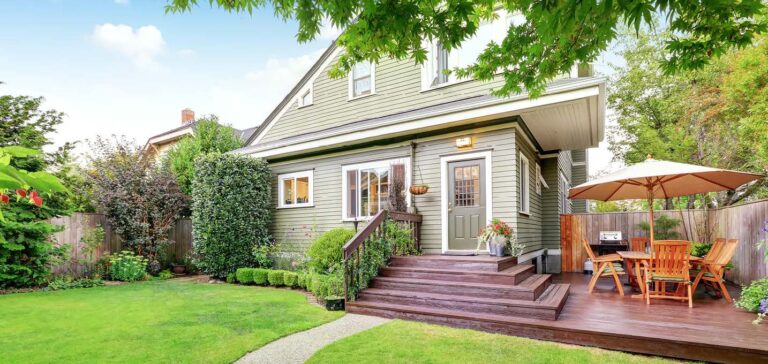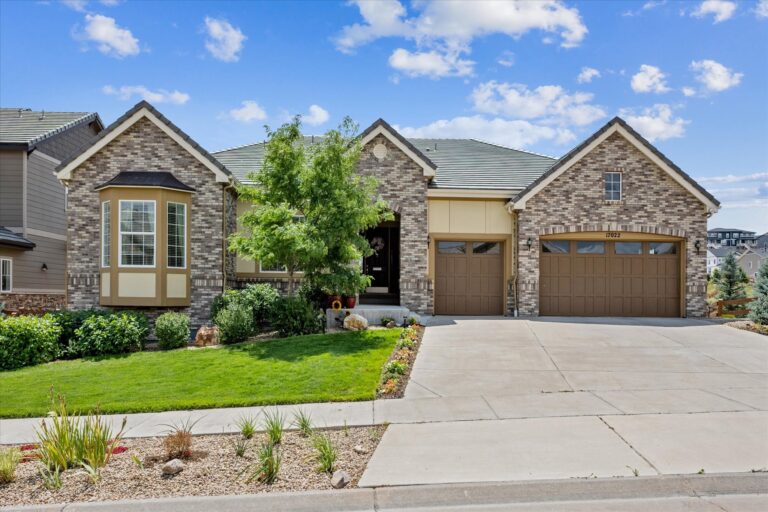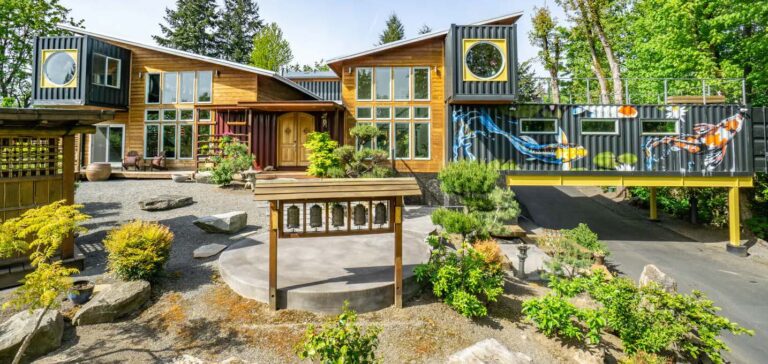
Buying a home can be an intimidating process right now, but there are many down payment assistance programs that can help aspiring homeowners pivot from home browser to homebuyer.
Many people believe they need to put down at least 20% if they want a home. But that’s not true. Most buyers have down payments ranging from 3.5% to 20% of the sale price of the home they’re buying. In this market, with prices hitting record highs, that can be a hefty sum. That’s where down payment assistance comes in and can help close the gap.
These programs can help buyers snag a home by providing cash that can go toward a down payment. There are even loan programs for certain qualified buyers that don’t require any down payments. The array of offerings from federal, local, and private sources can take the form of looser loan requirements, outright grants of money, or tax credits, all of which make homeownership more affordable.
First-time homebuyers, often with certain qualifications, are often beneficiaries of the assistance. Lower-income buyers, those who serve in the military or are veterans, and those who purchase fixer-uppers or homes in rural areas might also be eligible for the help. The assistance ranges greatly, from a grant of several thousand dollars to, at the high end, a savings of five figures over the life of the loan.
The down payment dilemma
About 71% of first-time homebuyers put down less than 20% for their house purchase, according to the National Association of Realtors® February Realtors Confidence Index Survey. The median down payment for first-time buyers is just 7%, according to NAR.
Meanwhile, only a sliver of first-time homebuyers is taking advantage of down payment assistance programs—likely only 3% or 4%, according to NAR.
Still, that 20% down has been something of a gold standard for homebuyers. Many buyers are finding that it’s the minimum amount down that sellers want to see if they’re going to win a bidding war in this incredibly competitive market, where first-time buyers might be competing with all-cash and investor offers. Sellers often believe buyers with 20% down are more financially stable and more likely to be approved for a mortgage.
It’s also the minimum that generally lets them avoid private mortgage insurance, or PMI, which is assessed because lenders believe the loan carries risk. This in turn raises the homebuyer’s monthly expenses.
Here’s an example: PMI is typically 0.5% to 1% of the loan amount per year. So if buyers put down less than 20% and their mortgage is $300,000, their PMI would be between $1,500 and $3,000 per year. That would add about $125 to $250 per month on top of their mortgage payment, a significant charge. (Homeowners can have PMI canceled when the equity in their home surpasses 20%.)
So, while a buyer can also choose loans that require a down payment of just a single digit, that PMI can stretch a budget paper-thin. That’s where down payment assistance can help.
“Awareness of down payment programs varies across the country,” says George Ratiu, manager of economic research at Realtor.com®.
A lack of knowledge about these financial helping hands could mean many buyers are leaving money on the table! Let’s take a closer look at these programs and whether they could help folks snag homes of their own.
What is down payment assistance?
Down payment assistance can take several forms and can even help buyers circumvent the PMI payment.
There are at least 2,000 such programs across the country. Some are federal, but most tend to be at state and local levels, which is important to know when searching for help. There are also private organizations, from lenders to nonprofits, that will work with borrowers who need help.
These programs might offer grants, loans, tax credits, or a combination of a couple of these benefits. Funding can come from our government, nonprofits, and private enterprises. Let’s take a closer look:
Grants might be the most desirable form of down payment assistance. Typically, a grant is fully forgiven at closing and never has to be paid back. Yes, we’re talking about free money!
About 7% of down payment help comes in the form of grants, says Veronica Khandelwal, vice president of HFA Relations at Down Payment Resource, which provides consumers with guidance on this kind of assistance. But there is a catch.
“Grants require owner occupancy,” she says of the requirement for buyers to live in these properties. That’s to make sure these loans don’t go to investors or vacation-home buyers. “Some programs allow grants to be applied to multifamily purchases of one to four units so long as one of the units is occupied by the borrower.”
Forgivable loans are another option. These are loans that need to be repaid only if what’s known as a repayment trigger event occurs, such as if the home is sold before the end of the term, the home is no longer owner-occupied, the title is transferred, or the loan is defaulted on.
Deferred-payment loans also are available. These are paid back either at the end of the loan term or if a repayment trigger occurs. So while it’s not a gift, it will help homebuyers get over that down payment hurdle and buy a house they might otherwise not have been able to afford.
Repayable loans are another leg up on homeownership. They require borrowers to make monthly payments, like a typical loan. But here’s the good part: They do so at interest rates starting as low as 0%. That helps spread the down payment and closing costs over a number of years, making it much easier to enter the housing market.
Some agencies also offer a combination of these forms of assistance. That could mean that a portion of the help will be forgiven (or “written off” with no repayment needed) while some will need to be repaid. Tax credits are sometimes offered as well, further sweetening the deal.
Each down payment assistance program will have its own rules and guidelines, but the vast majority are offered only for a home that buyers will live in as a primary residence.
What kinds of down payment assistance are available?
Now let’s get down to the specifics. Here are some of the more popular national options folks might access to help them to pivot from home shopper to homebuyer.
FHA (Federal Housing Authority) loans were created by the U.S. Department of Housing and Urban Development for first-time homeowners. These mortgages allow as little as 3.5% for the down payment, provided buyers have a credit score of 580 or higher, along with other qualifying factors. The federal government insures these loans, and for that reason, banks are more willing to loan money to homebuyers who have neither top-tier credit nor loads of cash to put down on the purchase.
FHA Section 203(k) loans require only 3% down, provided qualifying buyers will live in the property, typically one that needs work, while they fix it up. For buyers hoping for a DIY route into a dream home, this could be a win-win. The cost of improvements is included in the loan so buyers can finance both the home and up to $35,000 in repairs.
But buyers beware: The cost of materials and construction labor has spiked since the start of the COVID-19 pandemic, and work is taking much longer to be completed than it did just two years ago.
Fannie Mae and Freddie Mac are federally funded loans that can help buyers skirt steep down payments. The Home Possible, HomeReady, and HomeOne loans typically offer a 3% down payment mortgage to qualifying, lower-income homebuyers.
Good Neighbor Next Door is another HUD-sponsored program. In this case, law enforcement officers, teachers, firefighters, and emergency medical technicians can enjoy a substantial incentive in the form of a discount of 50% from the list price of the home in a community that is being revitalized. The buyer must live in the house for three years as a primary residence.
Teacher Next Door Grant is a program similar to the one above but is designed to help educators own their own homes. Grants to the tune of up to $8,000 in certain areas are possible with additional down payment assistance available in some circumstances.
The USDA (U.S. Department of Agriculture) Rural Home Loan Program was created to assist people buying homes in rural locations. For qualifying, single-family properties, loans might be available with no money down. There are maximum income limits and other qualifications to be eligible for one of these mortgages.
VA (U.S. Department of Veterans Affairs) loans might be offered directly by the VA or backed by the department. Several factors are considered, such as service history, duty status, income, and credit rating. But those who qualify can purchase a home with zero down as long as the sales price isn’t higher than the home’s appraised value.
There are plenty of other programs available as well. Different states and cities, as well as individual lenders and nonprofits, can help prospective homebuyers get the financing they need. Folks should put their location and “down payment assistance” into a search engine, and take a look at what’s available. They might see everything from Habitat for Humanity to local religious organizations pop up. Also, visit Down Payment Resource.
One other path to explore is whether a buyer’s job provides down payment assistance.
“A lot of employers may offer assistance in, say, the form of a $10,000 loan that is forgivable after five years,” says Realtor.com’s Ratiu.
Who can qualify for these programs?
Get ready for some good news. There are a lot of misconceptions about who qualifies for down payment assistance.
“Many people think these programs are only available to low-income borrowers, first-time homebuyers, or for properties that have sales price limits,” says Down Payment Resource’s Khandelwal. “But if you look, you’ll find specialized programs designed to assist specific groups, including first-generation homebuyers, minorities, indigenous people, people of color, veterans, those with government jobs, disabilities, and more.”
Here’s something else to smile about: A first-time homebuyer doesn’t just mean someone who’s never bought a home before.
“The federal government generally holds a broader definition of a first-time homebuyer,” says Ratiu. “It’s someone who has not been a homeowner in the past three years. If you sold a house three-and-a-half years ago, you qualify as first-time buyer.”
How can I get down payment assistance? What steps do I take?
There are a few different steps that buyers can take to find a down payment assistance program that’s right for them.
Check the federal programs mentioned above (like HUD, VA, USDA, Fannie Mae, and Freddie Mac), and see if there’s anything suitable.
Buyers should also visit their state’s Department of Housing website and see what might be listed, or call their number and inquire what down payment assistance programs might be available. Cities, towns, private lenders, and nonprofits may also have help.
“Homebuyers should seek the assistance of a mortgage lender who specializes in affordable lending to identify their best options,” advises Khandelwal.
In terms of what is typically needed to access aid, the documentation is very much in line with what’s needed to apply for any mortgage. Buyers will likely need the following:
- Pay stubs plus W-2s from the past few years to verify employment and income history
- Any 1099 forms showing other income
- Bank statements
- Tax returns
- Details on the property they intend to buy (The real estate agent can share this information.)
The paperwork is processed in much the same way as a home loan, and there may be requests for more documents.
Then, if buyers are approved, they will be ready to move ahead with a lower—or no—down payment as their homeownership journey unfolds.
Article originally appeared on Realtor.com.







